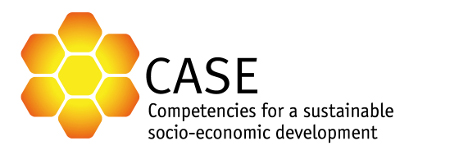 What is it about?
What is it about?
The Sustainability Performance Tool is a qualitative tool for recording and developing sustainability in companies and non-profit organizations.
It provides a holistic overview of the interplay between business areas within companies and opens up opportunities to systematically identify and further develop sustainability potentials and challenges. It builds on a comprehensive understanding of sustainability that takes into account ecological, social and economic aspects in a balanced relationship.
The tool can be used by enterprises and organizations as a self-evaluation tool, as well as by students in cooperation projects with business partners.
The collection of relevant information is based on the assessment categories. It is carried out in a two-step process:
Desktop research: Relevant information about the organization is collected via websites, company reports, advertising brochures and other media. It should provide a rough overview of the status quo of sustainability in the analyzed company. The absence of central information in external communication is also a statement and can already point out an important field of action.
Field research: The information that cannot be collected via secondary sources is collected through interviews. Since business partners generally have little time, a targeted preparation in advance is essential. In addition to general principles of good cooperation (see CASE Guide), the following questions should be clarified:
- Who are the interview-partners? (CEO, head of department,…)
- Is a visit of the company possible?
- Which issues can be gathered only over a face to face meeting?
- What are the expectations of the partners?
- Should the analyse cover the whole enterprise or only divisions?
- Assessement, conducted by students
- Discussion of the results with the external partners
- Alternative: Self assessement of the project partners and afterwards discussion with students
The final report summarizes the results of the assessment and the SWOT analysis. It is prepared by the project group, has to be approved by the teacher and agreed with the project partners before finalization.
Depending on the requirements, the final report can also be presented directly towards the management and / or staff of the partner company.
 Features
Features
- Self-evaluation
- External evaluation
- Graphical visualization
- Comparison of results
- Benchmarking (planned)
 Where to use it?
Where to use it?
 Downloads
Downloads
- Manual Performance Tool – EN (pdf) including a detailed description and background information
- Manual Performance Tool – CS (pdf)
- Manual Performance Tool – DE (pdf)
- Manual Performance Tool – IT (pdf)
- Manual Performance Tool – SV (pdf)

